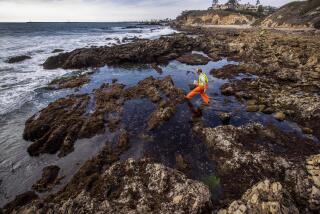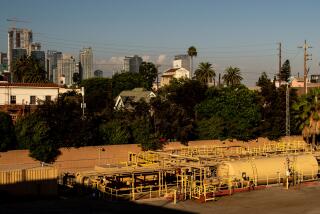Investigators focus on possible design flaws in BP well
- Share via
Reporting from Houston and New Orleans — Federal investigators are homing in on the role that BP’s Houston operations had in possible design flaws that may have contributed to the April 20 blowout of the Deepwater Horizon well.
In particular, they are focusing on John Guide, a Houston-based supervisor who BP workers said was the main official with authority over the design of the Gulf of Mexico well.
“What was interesting to me is that [two BP officials] have pointed at Mr. John Guide, the well team leader, as the decision maker,” Coast Guard Capt. Hung Nguyen, the lead investigator, said at a joint Coast Guard- Interior Department hearing in Houston. “If that is true, that is a huge responsibility for one position and on one man.”
In testimony Friday, BP drilling engineer Brett Cocales said it was Guide who had given the order to use fewer safety devices, known as centralizers, than recommended by a contractor.
The use of centralizers — doughnut-shaped sheaths that surround pipe and keep it from knocking into the side of the well — has become a key issue in the investigation. A properly centered pipe helps to ensure a uniform cement seal, a key part of keeping dangerous bubbles of methane from coming into the well, shooting up the pipe to the rig and exploding.
Jesse Gagliano, an employee for contractor Halliburton, has testified he suggested to BP that it place 21 centralizers in the well bore. But BP opted to use six. Two days before the disaster, he sent the company an e-mail warning that using fewer centralizers could result in “severe” gas flow.
Cocales said two other drilling engineers in the BP Houston office, Mark Hafle and Brian Morel, were responsible for designing the well and recommended that fewer safety devices be used.
Hafle and Morel refused to testify this week, invoking their 5th Amendment right not to incriminate themselves.
The panel is expected to convene again in October and plans to release its findings by the end of January.
Meanwhile, engineers working to kill the renegade well have abandoned efforts to remove pieces of drill pipe stuck in it. Early next week they will attempt to remove the blowout preventer and replace it with a stronger one.
On Friday, retired Coast Guard Adm. Thad Allen ordered preparations to begin over the weekend for the procedure, which will involve removing the capping stack installed in July and exerting up to 80,000 pounds of pressure to lift out the blowout preventer. Officials don’t expect oil to leak into the gulf again when the cap is removed.
Coast Guard officials still hope to meet their post- Labor Day timeline for shutting down the well.
Allen said engineers hoped to begin drilling the final 50 feet of a relief well on Sept. 7 or 8. That will take about four days, after which a final load of mud and cement can be pumped into the damaged well to put an end to the four-month-long well kill effort.
The removal process is being overseen by U.S. Justice Department criminal investigators and the Coast Guard investigation team, which have representatives at the drilling site to collect evidence to determine potential criminal liability for the spill.
Federal authorities announced they had reopened 4,281 square miles of federal waters off western Louisiana for fishing. No oil has been observed in the area since July, and officials will continue to aggressively test seafood for contamination.
An additional 48,000 square miles — about 20% of the federal waters in the gulf — remain closed to fishing, including many waters off the coast of Alabama.
ron.lin@latimes.com
kim.murphy@latimes.com
More to Read
Sign up for Essential California
The most important California stories and recommendations in your inbox every morning.
You may occasionally receive promotional content from the Los Angeles Times.











